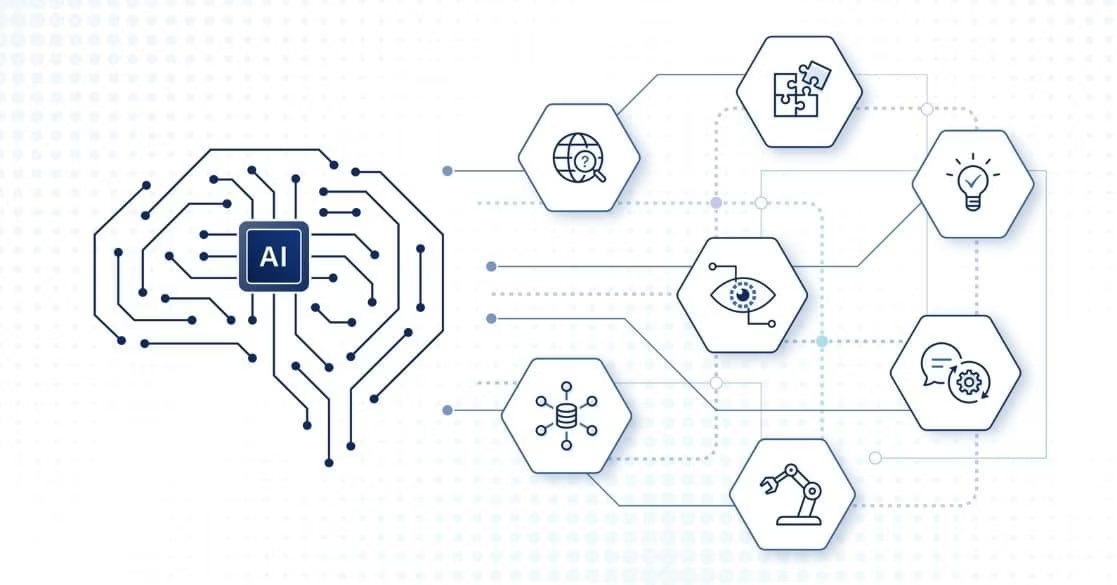
AI is More Than ChatGPT

Since the public release of ChatGPT in November 2022, terms such as artificial intelligence, machine learning, and deep learning have been commonly referred to by non-experts as “AI”. This could be confusing for those that are unfamiliar with the topic and are trying to learn the basics. I also think it can be a bit confusing for others that are more well-versed in the area. I’ve been part of some discussions where I wasn’t sure if we were talking about ML, DL, GenAI, or just AI in general until twenty minutes later when someone mentioned a tool like ChatGPT.
While in some cases it’s fine to use general terms, I think it’s important that we are specific when talking about AI because there are many different types of AI solutions which are based on differing capabilities and functionalities. These differences matter, especially when you are new to the topic or trying to solve a very specific problem.
Particularly in the audit world, when auditors are conducting interviews with the business during the planning phase to understand the environment, it’s important to be specific. Auditors often need to ask follow-up questions to ensure the correct terms are being used so that the appropriate audit procedures can be applied.
Let’s talk about the different types of AI:

Artificial Intelligence (AI) is the general term and involves techniques that equip computers to emulate human behavior, enabling them to learn, make decisions, recognize patterns, and solve complex problems.
Machine Learning (ML) is a subset of AI, which uses advanced algorithms to detect patterns in large data sets, allowing machines to learn and adapt.
Deep Learning (DL) is also a subset of AI, which uses neural networks for in-depth data processing and analytics tasks.
Generative AI (Gen AI) is another subset of AI which generates content based on provided input. This is where the tool ChatGPT lives. Gen AI has evolved in itself and can now generate text, image, and video based content as well as be used to generate tasks using techniques like automation, virtual assistants, and agents.
Yes, these can technically all be referred to as “AI”, but you will have more useful conversations that can lead to strategic solutions if you are specific with the terms you are using.
You can also look at the different types of AI categorized by their capabilities and functionalities. This is where it gets interesting!

There are three types of AI based on its capabilities: Narrow AI, General AI, and Super AI. These are more general categories that allow you to understand the different types of things that the AI solutions are able to accomplish. In order of most common:
Narrow AI (ANI or weak AI) simulates specific parts of human cognition but only related to a narrow domain. The scope of its abilities is defined by specific tasks but it does have a high degree of accuracy and efficiency.
General AI (AGI) can undertake any intellectual task that a human can perform, like sensory perception, fine motor skills, problem solving, creativity, and social-emotion. You can probably guess, but we aren’t quite there yet with this category as it does require a human in the loop (HITL) to validate decisions and actions.
Super AI (ASI) is currently hypothetical, transcends human intelligence, and surpasses human capabilities. When we get to this point, we will encounter creative groundbreaking innovations!
While ANI is the current state of AI, AGI and ASI might not be too far behind with the pace at which we are seeing AI advancements. What I find particularly interesting are the functionalities of these AI solutions. These are the categories you should pay close attention to when picking the most appropriate AI solution to solve a specific problem.
There are four types of AI based on its functionalities: Reactive Machines, Limited Memory, Theory of Mind, and Self-awareness. In order of most common:
Reactive Machines are the most basic forms of AI systems and operate by automatically generating a response to a specific, limited set of inputs. Some examples are smart home devices (Nest) and industrial robotics.
Limited Memory uses observational data and brief memory recollection to perform a specific task. Most of the AI solutions that you interact with on a daily basis come from this category. Some examples are autonomous vehicles, virtual assistants (Alexa), recommendation systems (Netflix), and chatbots.
Theory of Mind can understand and mimic human thought patterns, ideas, and decision-making processes. Some examples include ChatGPT and social robots like Sophia.
Self-awareness (Self-aware AI) are systems that are aware of emotions and mental states of others and themselves. This type of functionality does not currently exist and will require more advancements in neural networking, deep learning, and natural language processing.
At this point, we have advanced so much even since the public release of ChatGPT in November 2022. I’m curious if this pace will continue and if we are going to see additional capabilities and functionalities added to this list.
What do you think?
Originally published on LinkedIn.
I love working with Internal Audit teams to help them leverage analytics and AI to make their lives easier. If that’s you, let’s chat!

 - by
- by





